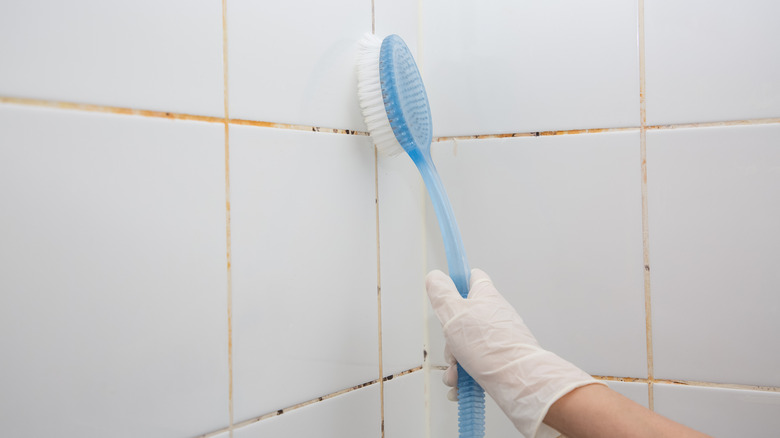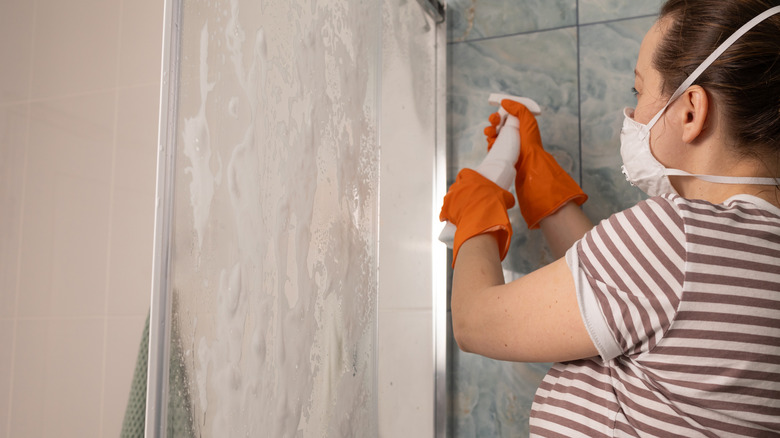Why Your Grout Turned Red (& The Cleaning Mistake Making It Worse)
A good shower can do wonders for your mind and body. Whether you've had a long hard day or are just waking up, the last thing anyone wants to see when they step into the shower is a slimy red/pink substance lurking in the shower grout. If this has happened to you before, you might be wondering what turned your grout red and, more importantly, how do you get rid of it. Well, odds are, that red coloring is the result of a bacteria called Serratia marcescens. It's possible that the Serratia marcescens, often called pink mold, developed as a result of not cleaning your shower as often as you should as the bacteria thrives on the fats and minerals found in soap and shampoo residue. If your first instinct is to grab a bottle of bleach, just wait. While bleach can help control Serratia marcescens, under certain conditions this is a cleaning mistake that can make things worse. But don't worry — there's an effective cleaning alternative and you probably already own it.
When you're looking for genius hacks that will keep your shower squeaky clean, bleach seems like an obvious, go-to cleaning ingredient. However, in the case of Serratia marcescens, bleach can damage surfaces. Over time, bleach can reduce grout's durability and damage the sealant that protects grout from moisture, making it even easier for Serratia marcescens to reoccur. Instead, try hydrogen peroxide and baking soda as a safer but effective cleaning method.
Serratia marcescens: causes, removal, and prevention
There are a few key conditions that help cause Serratia marcescens — dampness, warmth, and poor ventilation are chief among them. Other factors such as hard water deposits, soap residue, body oils, and dead skin cells support the spreading of Serratia marcescens. So, it makes perfect sense that this bacteria often pops up on shower tiles, grout, and silicone seals. The bacteria typically has a red, orange, or pink color and a slimy texture.
To clean and remove the nasty, reddish residue, avoid bleach, which can not only harm your shower grout but can irritate your eyes and skin and be harmful when inhaled. Instead, pour some 3% hydrogen peroxide into a spray bottle. Then, equip yourself with a mask and pair of rubber gloves. For extreme conditions, pre-treat the affected area with a paste of baking soda and water first. Then, begin spraying the affected areas with hydrogen peroxide. Let that sit for roughly 20 minutes, then use a bristle brush to scrub the bacteria away. Rinse and dry your tiles, then repeat the process if needed.
As for preventing Serratia marcescens, regular cleaning, disinfecting, and wiping your shower dry after each use will go a long way. If you're sick of wiping grout, you could always ditch the shower tiles and try an alternative that's easier to clean such as plaster shower walls (though the regular cleaning rules will still apply). Lowering the humidity in your bathroom can also help. To do this, always use the fan when showering and consider opening the window after a shower as well. You may also want to invest in a dehumidifier for the space.

